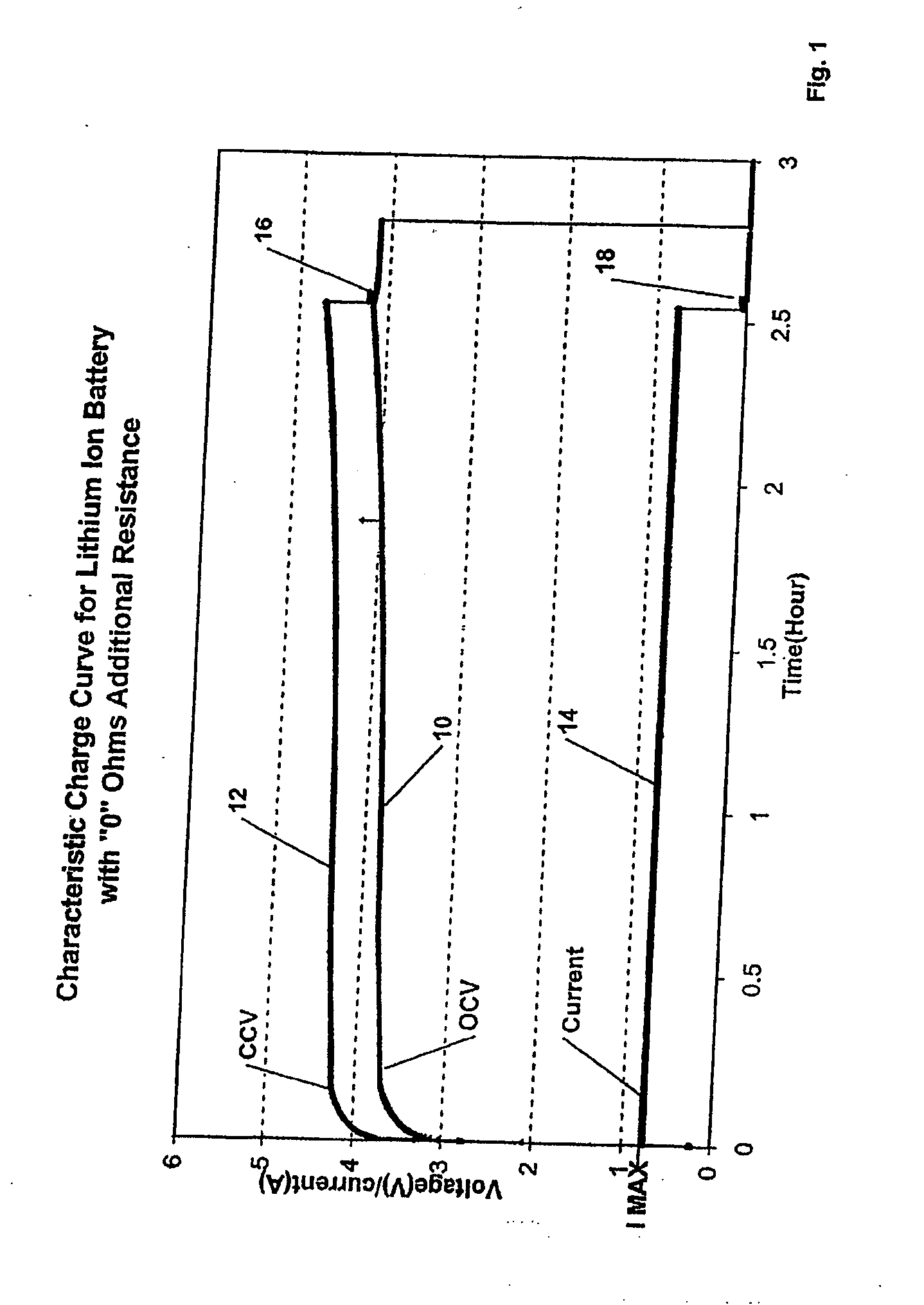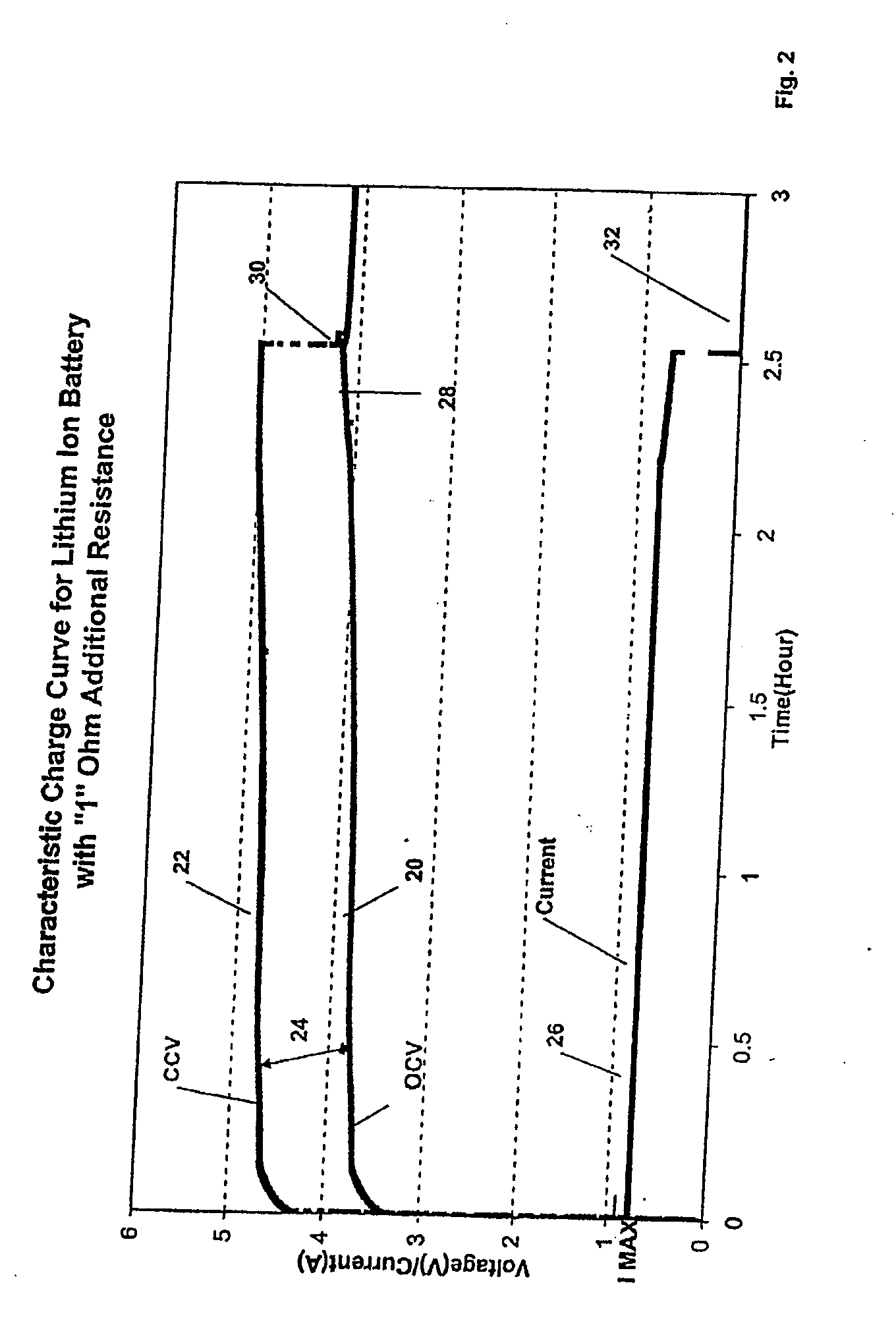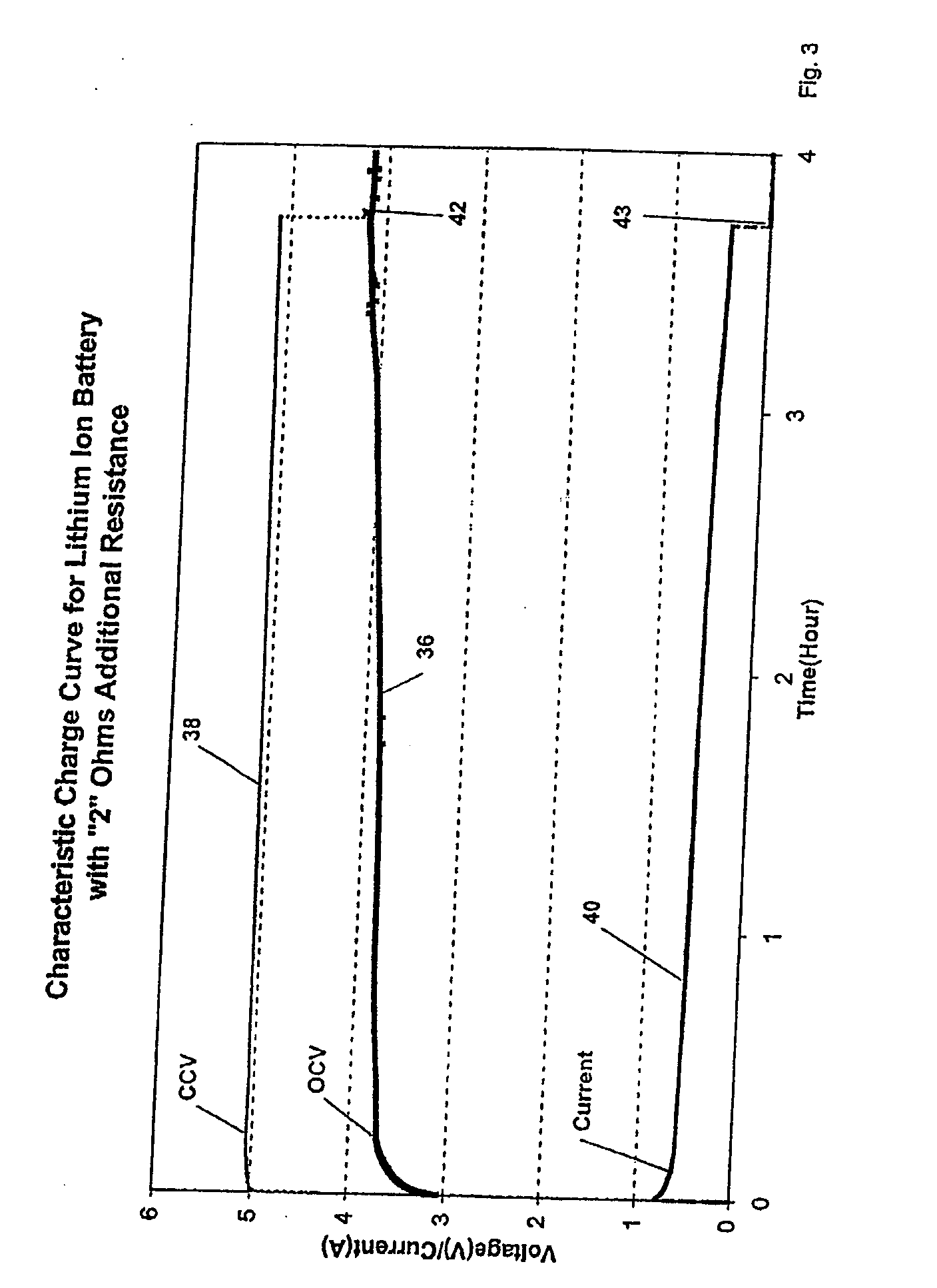Rapid charge lithium ion battery charger
a lithium ion battery and charger technology, applied in the field of battery chargers, can solve the problems of changing resistance of the various resistance elements, affecting the charging efficiency and limiting the charging current of the battery cell, so as to reduce the charging time of lithium ion batteries
- Summary
- Abstract
- Description
- Claims
- Application Information
AI Technical Summary
Benefits of technology
Problems solved by technology
Method used
Image
Examples
Embodiment Construction
[0022] The present invention relates to a battery charger circuit and, in particular, a battery charger circuit for rapidly charging lithium ion battery cells. As is known by those ordinarily skilled in the art, such lithium ion batteries are charged in a constant current mode and in a constant voltage mode. In accordance with an important aspect of the invention, the battery charger circuit provides and maintains a constant and maximum charging current to the battery cell which not only compensates for the initial resistance of the series resistance elements but also the anticipated increase in resistance of the circuit over time, foe example due to oxidation of the battery cell contacts to provide rapid charging over the antipated resistance change of the circuit. By taking into account the maximum anticipated resistances in the battery charging circuit, the battery charger circuit is configured to provide a charging voltage level, that is able to provide a maximum and constant ch...
PUM
 Login to View More
Login to View More Abstract
Description
Claims
Application Information
 Login to View More
Login to View More - R&D
- Intellectual Property
- Life Sciences
- Materials
- Tech Scout
- Unparalleled Data Quality
- Higher Quality Content
- 60% Fewer Hallucinations
Browse by: Latest US Patents, China's latest patents, Technical Efficacy Thesaurus, Application Domain, Technology Topic, Popular Technical Reports.
© 2025 PatSnap. All rights reserved.Legal|Privacy policy|Modern Slavery Act Transparency Statement|Sitemap|About US| Contact US: help@patsnap.com



